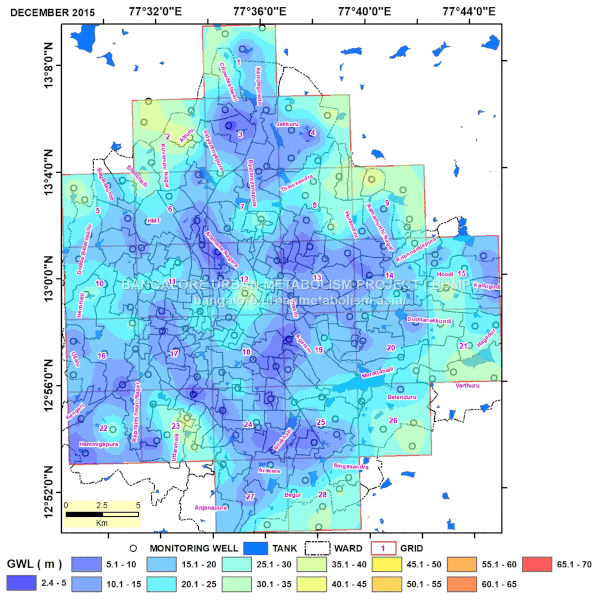Measurements of groundwater levels in Bengaluru by students
This map layer compiles more than 1000 measurements of groundwater levels in different parts of the city since 2007. Under the guidance of Dr. Muddu Sekhar, Associate Professor in the Dept. of Civil Engineering, various Indian Institute of Science (IIsc) student research projects have been conducted over recent years within Bengaluru city limits.
This interactive map layer compiles the entire data collected between 2007 and 2013. Clicking on each point brings up corresponding information for that point. This includes groundwater levels for each point, in metres below ground level. The date on which the measurement was taken is also listed.
Acknowledgements
Thanks to the students and field research teams who collected the data, and to to Dr. Muddu Sekhar for data access. Special thanks to current IISc research staff, P. Giriraj, Sanjeeva Murthy, and Manish Gautam.
Visualization by SEI’s Douglas Wang and Vishal Mehta.
